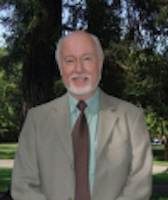In Memoriam: Dieter Cremer
Education
Ph.D., University of Köln, 1972In Memoriam: Dieter Cremer
- Postdoctoral research, Carnegie-Mellon University, 1972-1974
- Heisenberg-Professor, University of Köln, 1984-1989
- Professor of Theoretical Chemistry, Göteborg University, 1990-2005
- Director of the Department of Theoretical Chemistry, Göteborg University, 1992-2005
- Professor of Chemistry and Physics, University of the Pacific, 2005-2009
- Director of nanotechnology program, University of the Pacific, 2007-2009
- Professor of Chemistry, Southern Methodist University, 2009 -
Research Interests
- Development of Dirac-exact relativistic methods such as NESC (Normalized Elimination of the Small Component) for the investigation of environmental contaminants such as mercury and for the URVA investigation of catalytic reactions; development of two-component relativistic methods to describe spin-orbit coupling; development of relativistic methods for calculating first and second order response properties with NESC; calculation of relativistically corrected geometries, electric properties, NMR chemical shifts and NMR spin-spin coupling constants, ESR hyperfine coupling constants; determination of anomalies in the shape of nuclear isotopes
- Investigation of chemical reactions, especially catalytic reactions, with URVA (Unified Reaction Valley Approach) according to which a reaction can be partitioned into reaction phases representing specific structural changes of the reaction complex during the reaction; URVA is used for reaction, analysis, reaction design, and reaction control and the basis for a completely new mechanistic concept in reaction chemistry. Quantification of the Hammond-Leffler postulate. Building up a reaction library with more than 200 reactions.
- Investigation and description of chemical bonding with the help of vibrational spectroscopy and the local (adiabatic) vibrational mode concept develop in our CATCO group; proof that the adiabatic modes are the only local counterpart of the measured normal vibrational modes; investigation of weak bonding situations such as H-bonding, dihydrogen bonding, halogen, pnicogen, agostic and anagostic bonding, etc. with the help of the local mode stretching force constants
- Derivation of the relationship between normal and local modes in terms of Adiabatic Connection Schemes, which reveal the coupling mechanisms between local modes; analysis of Raman and infrared intensities which reflect the charge distribution in molecules; determination of the intrinsic bond strength from measured normal mode frequencies via their associated local modes frequencies; characterization of materials
- Development of density functional methods for multireference systems: BS-UDFT, ROSS- and REKS-DFT, CAS-DFT; investigation of the self-interaction error of DFT; description of the exchange-correlation hole; investigation of exchange functionals and their coverage of long-range correlation
- Development of correlation corrected ab initio methods for high-accuracy calculations of molecular properties: Many body perturbation theory: MP5 and MP6; effects of connected quadruple excitations, GVB-MP; Coupled Cluster methods with T excitations, size-extensive QCI: QCISDT and QCISDTQ; correct sixth-order methods; CBS limit studies; exact equilibrium geometries; exact energy differences.
- Calculation and analysis of NMR parameters: development of methods for calculating NMR chemical shifts and spin-spin coupling constants (SSCCs) in gas phase and solution; NMR-ab initio-chemical shift/SSCC methods for determining molecular geometries in solution; decoding the spin-spin coupling mechanism; SSCCs as hypersensitive antennae for electronic structure features. Through-space versus through-bond coupling; long-range coupling; multipath coupling.
- Calculation and analysis of vibrational spectra: revealing the physical meaning of compliance constants with the help of the adiabatic vibrational modes; automated correlation of isotopomer spectra, automated correlation of vibrational spectra in general; developing an analysis program for vibrational spectra to be used in industry.
- Description of unusual dynamic phenomena such as bond pseudorotation on Jahn-Teller surfaces or ring pseudorotation in puckered rings: development of curvilinear coordinates; new ways of describing ring molecules and substituent effects in ring molecules; development of parameters describing the global shape of biomolecules; development of coordinates describing large amplitude processes in macromolecules; conformational analysis based on SSCC: DORCOR method; conformational description of puckered rings; analysis of ring shapes.
- Investigation and description of protein structure with theoretical means utilizing Frenet coordinates and coarse graining; characterizing protein structure in terms of torsion and curvature of the protein backbone; calculating protein similarity; description of protein folding; connecting primary structure and tertiary structure of proteins.
- Analysis of the electron density distribution; description of the chemical bond; determining atomic charges and other atomic properties using virial partitioning
- Improvement of heuristic chemical models and concepts such as strain, electron delocalization, aromaticity, etc.; improving the theory of the chemical bond
Courses Taught
- Theory of the Chemical Bond
- Models and Concepts in Chemistry
- Introduction to ab initio Calculations: Hartree-Fock Theory
- Introduction into Nanotechnology and Materials Science
- Nanotechnology – Fundamentals and Applications
